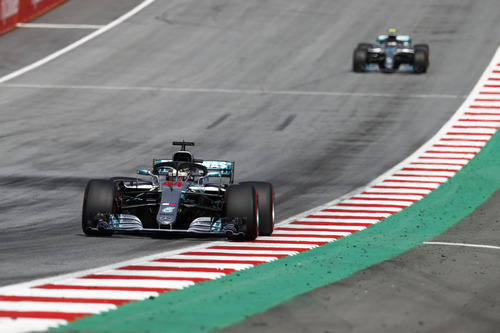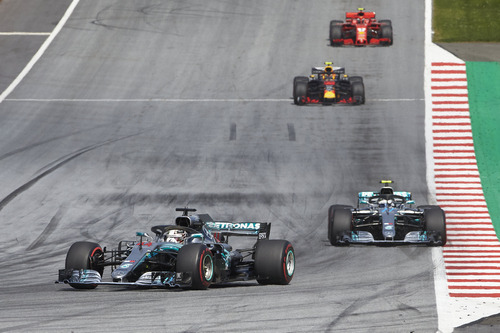
Mercedes was heavily criticized for their decision not to pit Lewis Hamilton during the virtual safety car period to clear his teammate’s stricken car from the circuit in Austria. But there was nothing in the race data to suggestion that leaving Hamilton out wasn’t the correct decision.

During the race, the excuse offered to the media was that Mercedes thought that bringing Hamilton in would result in Ferrari and Red Bull splitting their strategy to leave their number two drivers in front of Hamilton to slow him down and leave him vulnerable to their teammates. This is entirely reasonable, given that Ferrari certainly has no problem with jeopardizing Kimi Räikkönen’s race for the benefit of Sebastian Vettel. Red Bull would do the same. Things didn’t pan out and Hamilton’s dying tyres allowed the rest of the field to catch up. But the race data didn’t show that it wouldn’t have worked.
Hamilton took the race lead in turn one, while his teammate eventually fought he way back to P2 by the end of the first lap. After the first lap of the race, the gap from Hamilton to P3 was 1.7 seconds. This gap grew by roughly 0.5 seconds per lap, to 5.1 at the end of lap 8. During those laps, he was able to set the fastest lap of the race. The gap maintained at 4.5 seconds but increased again to 5 seconds right before the VSC period. Hamilton was able to set another fastest lap of the race.

There was no evidence to suggest that Hamilton wouldn’t be able to increase the gap enough to earn a free pitstop. After all, Hamilton was running the softer tyre compound and had clean air out front. To put it into context, Mercedes was the fastest car in free practices 1 and 2, as well as qualifying.
However, the story changed after the race finished. Toto Wolff, the Team Principal of the Mercedes F1 Team, shared a slightly different story in the post-race press statement released by the team:
“We decided to leave Lewis on track for one lap, because we thought it would take longer to clear the car from its position, and be able to react what the cars behind us did on the following lap. But the VSC cleared sooner than predicted; we simply made the wrong decision.”
This explanation doesn’t make much sense, since there would be no benefit to leaving Hamilton out for an additional lap under the VSC period, since there would be no way for him to gain time on his rivals. If that was the plan, it would have been a no-brainer to pit with everyone else.
At the end of the day, there’s not really a reason to dwell on the pit strategy mistake. Even if Hamilton had pitted earlier, the severe tyre graining that he experienced in the race would have still happened and he would have still been forced make a second pitstop. And even that doesn’t matter because it was an engine failure that ultimate put an end to his race.
The views and opinions expressed in this article are solely those of the author and do not necessarily reflect the official policy or position of any other agency, organization, employer or company. Assumptions made in any analysis contained within this article are not reflective of the position of any entity other than the author.